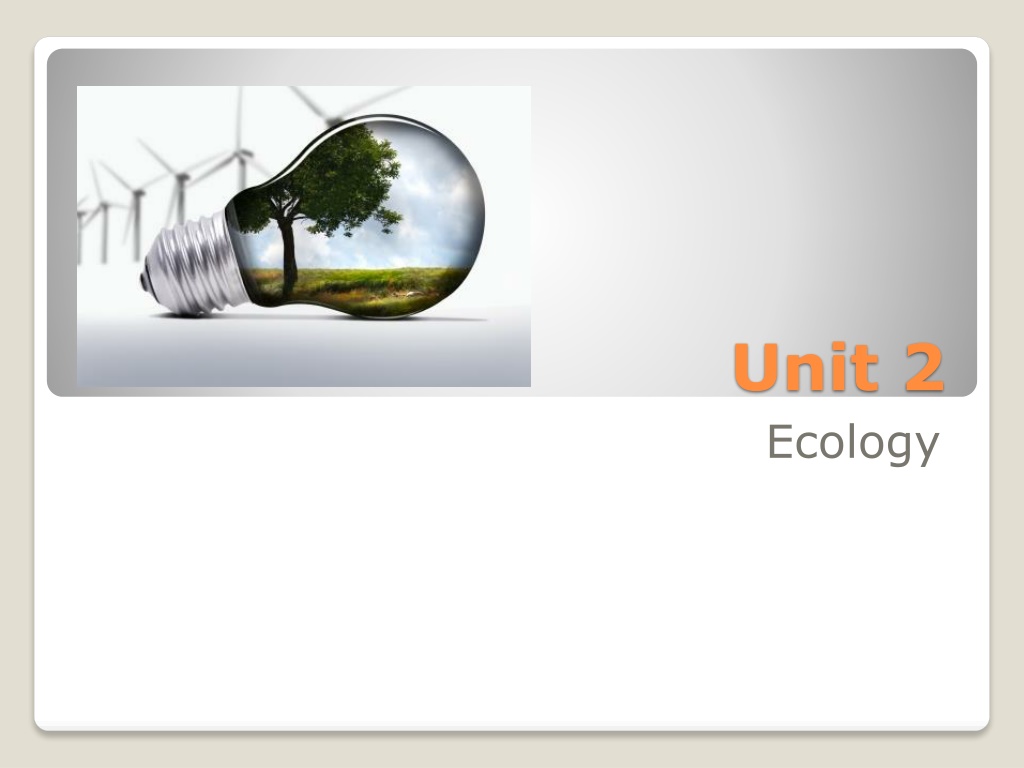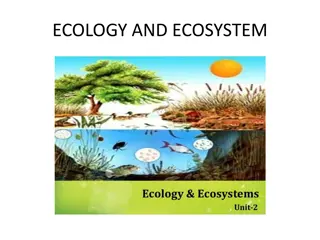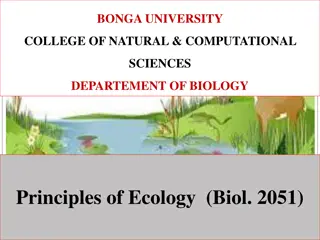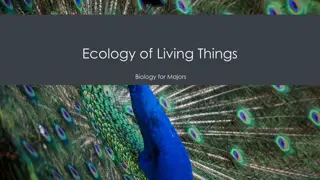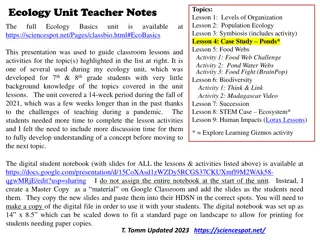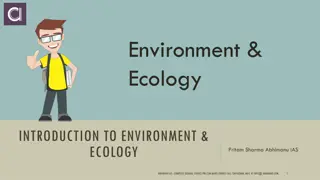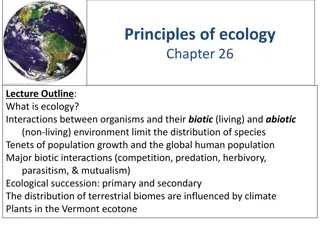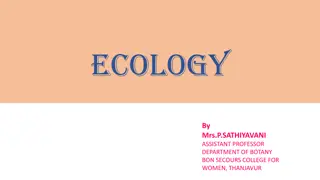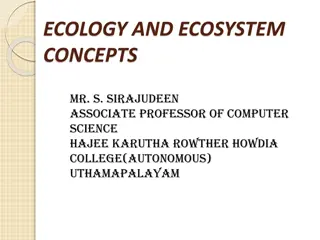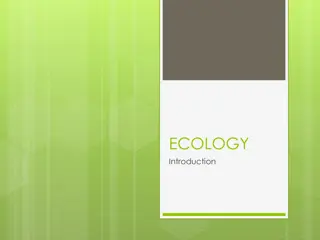Understanding Energy Flow in Ecology
Living things require energy to perform functions that keep them alive. This energy is obtained through food consumption, which contains chemical energy stored in molecules. Various processes such as decomposition and synthesis involve energy release and storage in living organisms. Heterotrophs obtain energy from consuming other living things, while autotrophs utilize sources in their surroundings to produce their own food. The ecosystem functions with different roles such as producers, consumers, and decomposers, all contributing to a balanced energy flow and nutrient recycling.
Download Presentation

Please find below an Image/Link to download the presentation.
The content on the website is provided AS IS for your information and personal use only. It may not be sold, licensed, or shared on other websites without obtaining consent from the author. Download presentation by click this link. If you encounter any issues during the download, it is possible that the publisher has removed the file from their server.
E N D
Presentation Transcript
Unit 2 Ecology
Big Idea What do living things need in order to do all the things that make them alive? Living things need to obtain & use energy in order to do work! Bioenergetics the study of the energy flow & transformations among living things Ecology the study of how living things interact with their environment In order to get stuff like food (aka energy)
HOW DO YOU OBTAIN ENERGY? Eat! What do we call the energy in our food? Calories Measure the amount of energy stored in your food Where is the energy stored in your food? In the molecules that are bonded together to make that food. Called chemical energy chemical energy!
BONDS When you break a bond You release energy! Decomposition When you make a bond You store energy! Synthesis
LIVING THINGS NEED A CONSTANT SOURCE OF FREE ENERGY! Basically 2 ways living things get this energy Heterotroph Obtain energy from other living things. AKA EAT Cellular Respiration Autotroph Use surrounding to make their own food! Plants photosynthesis Bacteria chemosynthesis
http://www.mikephoto.com/content/binary/turkey-vulture-feeding-3.jpghttp://www.mikephoto.com/content/binary/turkey-vulture-feeding-3.jpg ENERGY & ECOSYSTEMS Would a deer come running out of the woods and try to eat you? Why? Organisms have certain roles! Autotrophs Autotrophs producers Heterotrophs Heterotrophs consumers Special Case Decomposers (consume dead matter) Bacteria, fungi, worms, vultures Recycle important nutrients back into soil for producers such as plants to use again
TYPES OF CONSUMERS If you eat plants (herbivore) you are a primary (1o) consumer If you eat herbivores (carnivore) you are a secondary consumer (2o) If you eat 2oconsumers then you are a . Trophic Levels
Food Web More Realistic than chain Display the flow of energy through an ecosystem Arrow points in the directions the energy is traveling! Ecosystem all the living & nonliving things in an area All Living Things Biotic Factors All Non Living Things Abiotic Factors
The Re-Introduction of Wolves Go to page 95 in your textbook & read The Wolf Effect Then Use the food web on the handout, and answer question 1. http://yellowstoneinsider.com/wp-content/uploads/2009/05/wolf-howling.jpg
The mouse population The mouse population would most likely increase would most likely increase if what happened? if what happened? What would cause the mouse population to decrease? Using this information, why do you think we have such an overpopulation of deer in New Jersey?
More Vocab Habitat places where particular organisms live Niche - organism s role in its environment
Laws of Thermodynamics Study of Energy Changes 1st Law energy cannot be created or destroyed, but it can change forms. Law of conservation of energy
What does the 1st law mean for living things? Living things can not create their own energy, they must obtain it from their environment! Amount of usable, available energy is always decreasing in an ecosystem because it is being turned into other forms of unusable energy (heat). Relate to food web/food pyramid need more autotrophs to support a smaller number of heterotrophs Why it looks like a pyramid!
2nd Law Systems tend to change in a way that increases disorder or entropy! What does this mean for living things? Organisms must be well organized to remain alive & grow! Use energy to fight against entropy to maintain homeostasis!
Energy terms & calculations! Biomass dry weight of all organic matter contained within a trophic level (grams/kg) Energy stored in biomass is transferred from 1 level to another (only about 10%) What happens to the rest of it? Lost as heat energy or other unusable form
Put this information all together! Using what you have just learned, why can t trophic levels go on forever (4,5,6 level consumers)? Why is there a one way flow of energy in ecosystems? Where does the energy at the bottom always have to come from?
